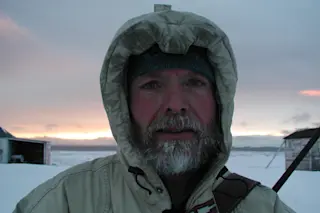One morning in late 1997, Stanley Miller lifted a glass vial from a cold, bubbling vat. For 25 years he had tended the vial as though it were an exotic orchid, checking it daily, adding a few pellets of dry ice as needed to keep it at –108 degrees Fahrenheit. He had told hardly a soul about it. Now he set the frozen time capsule out to thaw, ending the experiment that had lasted more than one-third of his 68 years.
Miller had filled the vial in 1972 with a mixture of ammonia and cyanide, chemicals that scientists believe existed on early Earth and may have contributed to the rise of life. He had then cooled the mix to the temperature of Jupiter’s icy moon Europa—too cold, most scientists had assumed, for much of anything to happen. Miller disagreed. Examining the vial in his laboratory at the University of California ...















